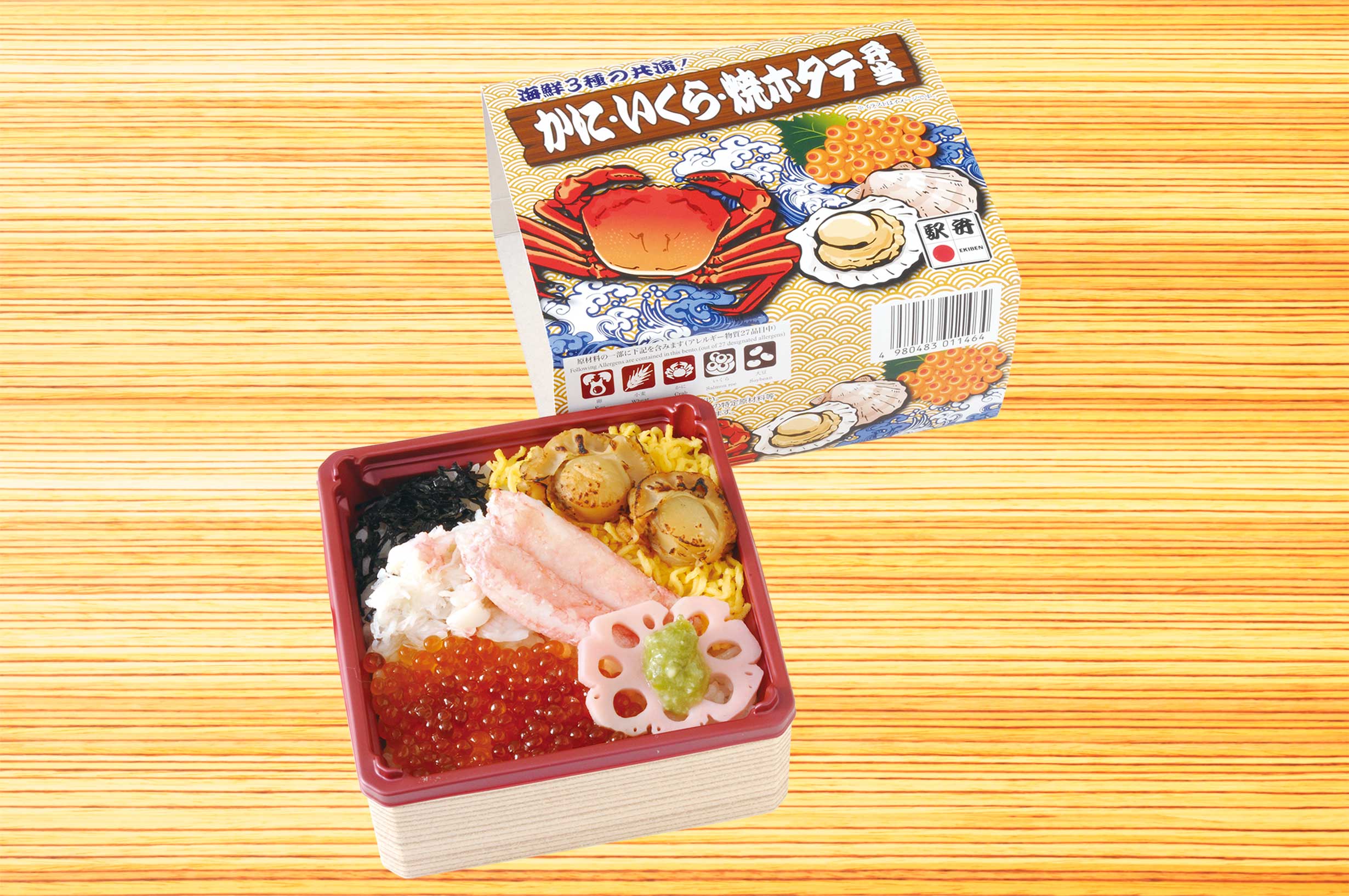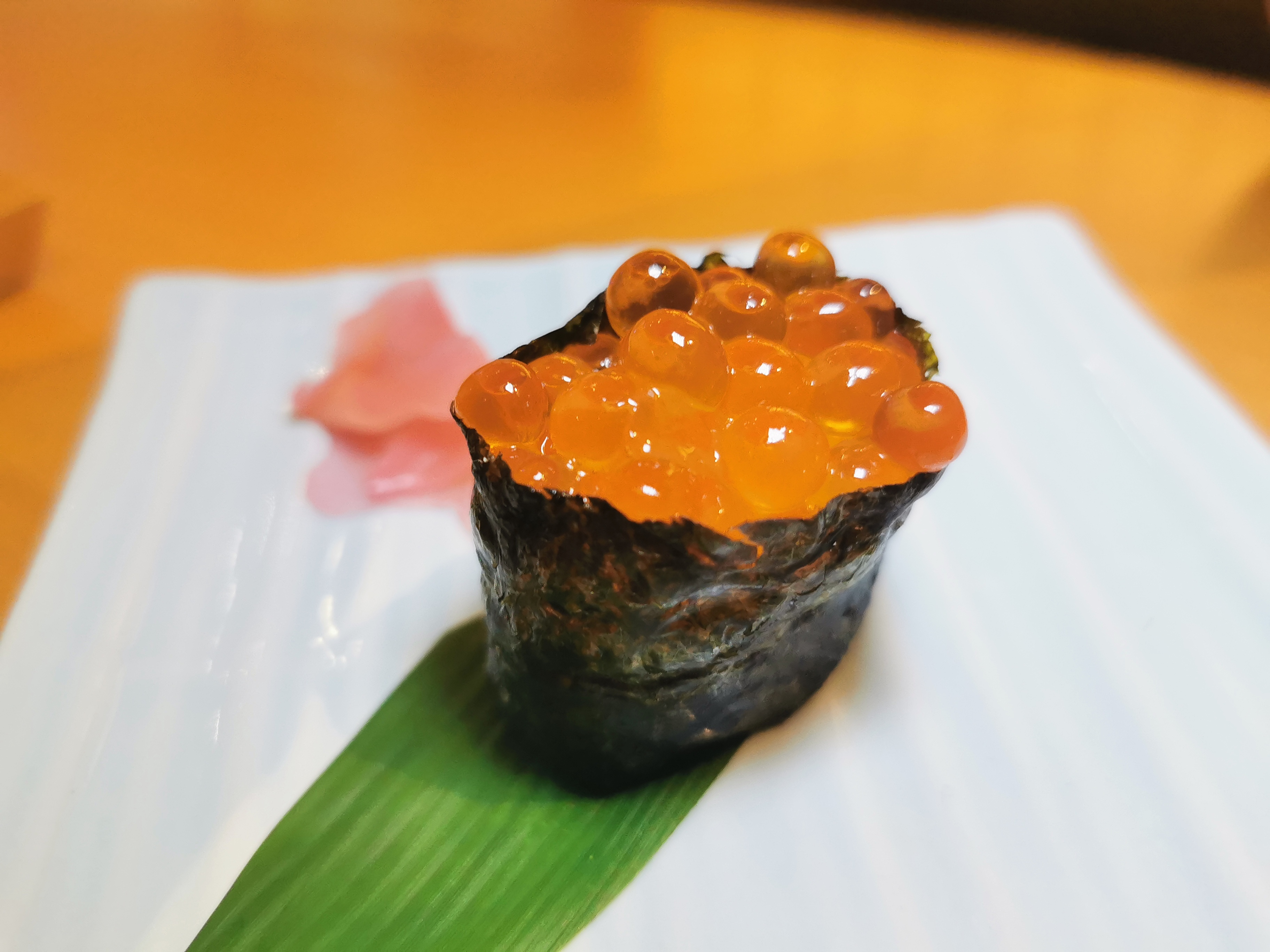Ikura De Yarimasu: A Deep Dive Into The World Of Salmon Caviar And Japanese Cuisine
When it comes to Japanese delicacies, ikura de yarimasu is more than just a phrase—it’s a culinary experience that brings together rich flavors and centuries-old traditions. Picture this: perfectly salty salmon roe glistening under the light, paired with a plate of steaming white rice. This isn’t just food; it’s an art form. Whether you’re a food enthusiast or someone who’s curious about Japanese culture, ikura de yarimasu deserves a place on your must-try list.
Ikura de yarimasu translates to “I’ll do it with ikura,” but its meaning goes beyond the literal. It represents a celebration of flavor, texture, and the joy of sharing a meal. This dish is more than just rice and fish eggs—it’s a symbol of how Japanese cuisine takes simple ingredients and elevates them to something extraordinary. If you’re ready to dive into the world of ikura and its cultural significance, you’re in for a treat.
From its humble beginnings as a seafood delicacy to its modern-day popularity in restaurants around the globe, ikura has captured the hearts (and taste buds) of food lovers everywhere. In this article, we’ll explore everything you need to know about ikura de yarimasu, including its origins, preparation methods, health benefits, and how you can enjoy it at home. So grab your chopsticks, and let’s get started!
Table of Contents:
- The Origins of Ikura
- How Ikura is Prepared
- Health Benefits of Ikura
- Best Pairings for Ikura
- Cultural Significance of Ikura
- Delicious Ikura Recipes
- Where to Buy Quality Ikura
- FAQ About Ikura
- Tips for Serving Ikura
- Conclusion
The Origins of Ikura: From Wild Waters to Your Plate
Ikura, or salmon roe, has a fascinating history that dates back centuries. In Japan, it was originally consumed by fishermen who would preserve the roe using salt to make it last longer during long voyages. Over time, ikura evolved from being a survival food to becoming a luxury item served in high-end sushi restaurants. Today, it’s one of the most sought-after ingredients in Japanese cuisine, and its popularity continues to grow worldwide.
A Brief History of Salmon Roe
Salmon roe has been a staple in many cultures, not just Japan. In Russia, it’s known as ikra, and in Scandinavia, it’s been enjoyed for generations. However, the Japanese took this humble ingredient and turned it into an art form. The process of curing and seasoning ikura involves a delicate balance of flavors, ensuring that each bead bursts with just the right amount of saltiness and umami.
- Lela Sohna
- Lauren S%C3%A3nchezs Family Background
- Lee Marvin
- Lilia Buckingham Height
- Lauren German Relationship
Did you know? The word “ikura” actually comes from the Russian word “ikra,” meaning fish eggs. This linguistic connection highlights the global influence of salmon roe and how it has traveled across borders to become a beloved ingredient in various cuisines.
How Ikura is Prepared: The Art of Curing
The preparation of ikura is both an art and a science. The process begins with carefully selecting fresh salmon roe, which is then cured in a brine solution to enhance its flavor and preserve its texture. The key to great ikura lies in the balance between salt and freshness. Too much salt, and the roe becomes overpowering; too little, and it loses its signature burst of flavor.
Steps to Prepare Perfect Ikura
- Start with fresh salmon roe that’s still in its membrane.
- Gently remove the membrane to separate the individual beads of roe.
- Soak the roe in a brine solution made from water, salt, and sometimes sugar.
- Strain the roe and let it rest for a few hours to allow the flavors to develop.
- Store the ikura in a cool, dry place until ready to serve.
This meticulous process ensures that each bead of ikura is perfectly plump and bursting with flavor. It’s no wonder that chefs around the world consider ikura preparation a true craft.
Health Benefits of Ikura: Why It’s Good for You
Ikura isn’t just delicious—it’s also packed with nutrients that are great for your health. Rich in omega-3 fatty acids, protein, and vitamins, salmon roe offers a range of benefits that make it a superfood in its own right. Let’s break down some of the key health advantages of incorporating ikura into your diet.
Nutritional Highlights of Ikura
- Omega-3 Fatty Acids: These essential fats support heart health and reduce inflammation.
- Vitamin D: Helps strengthen bones and boosts immune function.
- Protein: Essential for muscle repair and growth.
- Minerals: Contains potassium, magnesium, and phosphorus, which are crucial for maintaining bodily functions.
Whether you’re looking to improve your heart health or simply want to enjoy a nutrient-rich snack, ikura is an excellent choice. Plus, it’s low in calories, making it a guilt-free indulgence.
Best Pairings for Ikura: Elevate Your Meal
Ikura’s bold flavor pairs beautifully with a variety of foods, making it a versatile ingredient in any kitchen. From sushi rolls to pasta dishes, there are countless ways to enjoy this delicious fish roe. Here are some of the best pairings to try:
Top Pairings for Ikura
- White Rice: The classic combination of ikura and rice is a match made in heaven. The mild flavor of the rice complements the salty, briny taste of the roe.
- Sushi Rolls: Incorporate ikura into your favorite sushi rolls for an added burst of flavor. Try pairing it with avocado or cucumber for a creamy contrast.
- Pasta: Ikura can be used as a topping for pasta dishes, adding a unique twist to traditional Italian recipes.
- Salads: Sprinkle ikura over a fresh salad for a pop of color and flavor.
No matter how you choose to enjoy it, ikura adds a luxurious touch to any dish. Experiment with different combinations to find your perfect pairing.
Cultural Significance of Ikura: More Than Just Food
In Japanese culture, food is more than sustenance—it’s a way of life. Ikura de yarimasu embodies this philosophy, bringing people together through shared meals and celebrations. Whether it’s served at a formal dinner or enjoyed casually with friends, ikura represents the joy of connecting over good food.
Ikura in Japanese Festivals
During special occasions like New Year’s celebrations, ikura is often featured prominently in traditional dishes. Its vibrant orange color symbolizes good fortune and prosperity, making it a fitting choice for festive meals. In many households, serving ikura is seen as a gesture of hospitality and generosity.
By understanding the cultural significance of ikura, we can appreciate not only its taste but also the traditions it represents. It’s a reminder that food is more than just fuel—it’s a way of expressing love, gratitude, and connection.
Delicious Ikura Recipes: Bring the Flavor Home
Ready to try your hand at making ikura dishes? Here are a few recipes to inspire your culinary adventures:
Classic Ikura Donburi
This simple yet satisfying dish features a bed of steaming white rice topped with fresh ikura. To elevate the flavors, you can add a drizzle of soy sauce or a sprinkle of green onions.
Ikura Avocado Toast
For a modern twist, try spreading mashed avocado on a slice of toasted bread and topping it with ikura. This dish combines the creamy texture of avocado with the salty burst of salmon roe for a breakfast or brunch that’s both beautiful and delicious.
Ikura Pasta
Create a rich and flavorful pasta dish by tossing cooked spaghetti with butter, garlic, and ikura. Finish with a sprinkle of lemon zest for a refreshing touch.
These recipes are just the beginning. Get creative and experiment with different ingredients to make ikura your own!
Where to Buy Quality Ikura: Tips for Shoppers
Not all ikura is created equal. When shopping for salmon roe, it’s important to look for quality products that will deliver the best flavor and texture. Here are some tips to help you find the perfect ikura:
- Choose reputable brands that specialize in seafood products.
- Look for ikura that’s vacuum-sealed to preserve freshness.
- Check the expiration date to ensure you’re getting a fresh product.
- Consider purchasing ikura online from trusted retailers if it’s not readily available in your area.
Investing in high-quality ikura may cost a bit more upfront, but the difference in taste and texture is well worth it. Treat yourself to the best and experience the true magic of salmon roe.
FAQ About Ikura: Answers to Your Questions
Here are some common questions about ikura, along with expert answers to help you better understand this delicious ingredient:
Q: Is ikura safe to eat during pregnancy?
A: While ikura is generally safe for most people, pregnant women should exercise caution when consuming raw or cured seafood. Always consult with your healthcare provider before adding ikura to your diet.
Q: How long does ikura last in the fridge?
A: Properly stored ikura can last up to a week in the refrigerator. For longer storage, consider freezing it in an airtight container.
Q: Can ikura be used in non-Japanese dishes?
A: Absolutely! Ikura’s versatility makes it a great addition to a variety of cuisines. From Mexican tacos to French omelets, the possibilities are endless.
These FAQs should help clear up any confusion you might have about ikura. If you have more questions, feel free to leave a comment below!
Tips for Serving Ikura: Make It Shine
To truly showcase the beauty of ikura, follow these serving tips:
- Present ikura in a glass or ceramic dish to highlight its vibrant color.
- Pair it with complementary ingredients like wasabi, ginger, or citrus to enhance its flavors.
- Serve it at room temperature to allow the flavors to fully develop.
Remember, ikura is all about presentation and taste. Take the time to prepare and serve it thoughtfully, and your guests will be impressed.
Conclusion: Dive Into the World of Ikura De Yarimasu
Ikura de yarimasu is more than just a phrase—it’s an invitation to explore the rich world of Japanese cuisine. From its fascinating origins to its modern-day popularity, ikura continues to captivate food lovers around the globe. Whether you’re enjoying it on a bed of rice or incorporating it into innovative recipes, ikura offers a taste experience that’s both luxurious and satisfying.
So why not give it a try? Head to your local market, pick up some fresh ikura, and start experimenting in the kitchen. And when you’re done, don’t forget to share your creations with friends and family. After all, ikura de yarimasu is all about sharing the joy of good food.
Have you tried ikura before? What’s your favorite way to enjoy it? Leave a comment below and let us know! And if you loved this article, be sure to check out our other guides on Japanese cuisine and beyond. Happy cooking!

http//www.ekiben.or.jp/daimasu/images/Kani_Ikura_YakiHotate.jpg

IKURA Oh!SUSHI

Ikura Sushi Traditional Rice Dish From Japan